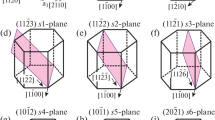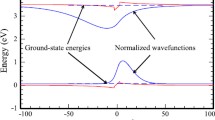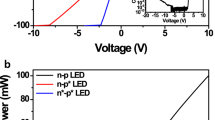
Overview
- Captures an accurate snapshot regarding the field and provide an insightful review to all the key issues in anticipation of the revolution in lighting technology
- Provides a comprehensive coverage of contemporary LED issues, such as efficiency droop, green gap, GaN on silicon, and high voltage LEDs, which have not been adequately discussed in the published book
- A valuable source of information for newcomers and experienced researchers working in the field.
- Includes supplementary material: sn.pub/extras
Part of the book series: Topics in Applied Physics (TAP)
Access this book
Tax calculation will be finalised at checkout
Other ways to access
About this book
Similar content being viewed by others
Keywords
Table of contents (14 chapters)
-
Front Matter
-
Back Matter
Editors and Affiliations
About the editors
Tae-Yeon Seong received his PhD from the University of Oxford. He is a Professor of Materials Science and Engineering and currently Chair of Department of Nanophotonics at Korea University. His research focuses on the area of wide band-gap materials and devices (emitters, detectors and electronics) using GaN and ZnO and developing these materials for illumination applications. He has authored and coauthored more than 340 peer-reviewed journal papers and holds 130 patents. He is a Fellow of the Institute of Physics (UK) and SPIE, an Associate Editor of Semiconductor Science and Technology, and an Editorial Advisory Committee Member of the Electrochemical Society Journals.
Jung Han is a Professor and currently the Chair of Electrical Engineering Department at Yale University. Before joining Yale University in 2001, he was a senior member of technical staff at Sandia National Laboratories, where he established a wide bandgap III-nitride semiconductor research effort for visible and ultraviolet LEDs. His current research activities includes the visible InGaN light emitting structures for energy-efficient solid state lighting, nano-scale synthesis of AlGaInN heterostructures, and hybrid inorganic-organic flexible optoelectronics. He has authored and coauthored more than 200 papers in peer-reviewed journals and holds 7 US patents. He is a fellow of Institute of Physics, UK. The awards he received include MRS Ribbon Award (2005) and R&D 100 (2004).
Hiroshi Amano received D.Eng from Nagoya University. He is a Professor at Department of Electrical Engineering and Computer Science, Nagoya University. In 1985, he developed low-temperature deposited buffer layers which provided the technology vendors to the development of high-quality group III semiconductor based LEDs and LDs. In 1989, he succeeded in growing p-type GaN and fabricating p-n junction LEDs for the first time in the world. He has published more than 440 technical papers. The awards he received include: 1996 IEEE/LEOS Engineering Achievement Award, 1998 Japan Society for Applied Physics C Award, 1998 Rank Award, 2001 Marubun Academic Award, and 2002 Takeda Award.
Hadis Morkoç received Ph.D. from Cornell University, NY, and Honoris Causa from University of Montpellier II. He held positions at Varian Associates, Palo Alto, CA, University of IL at Urbana-Champaign, AT&T Bell Laboratories, Caltech and JPL, and Air Force Research Laboratories. He is with School of Engineering at VCU, Richmond VA. He is among the most cited with over 1600 publications. He is a Fellow of AAAS, APS and IEEE, and member of Sigma Xi (Life member), Eta Kappa Nu, Phi Kappa Phi (Life member), Sigma Pi Sigma, Tau, Beta Pi, and International Men of Achievement, and ISI highly cited authors.Accessibility Information
Bibliographic Information
Book Title: III-Nitride Based Light Emitting Diodes and Applications
Editors: Tae-Yeon Seong, Jung Han, Hiroshi Amano, Hadis Morkoc
Series Title: Topics in Applied Physics
DOI: https://doi.org/10.1007/978-94-007-5863-6
Publisher: Springer Dordrecht
eBook Packages: Physics and Astronomy, Physics and Astronomy (R0)
Copyright Information: Springer Science+Business Media Dordrecht 2013
Hardcover ISBN: 978-94-007-5862-9Published: 24 May 2013
eBook ISBN: 978-94-007-5863-6Published: 08 July 2014
Series ISSN: 0303-4216
Series E-ISSN: 1437-0859
Edition Number: 1
Number of Pages: XIII, 390
Topics: Optics, Lasers, Photonics, Optical Devices, Microwaves, RF and Optical Engineering, Semiconductors, Applied and Technical Physics



